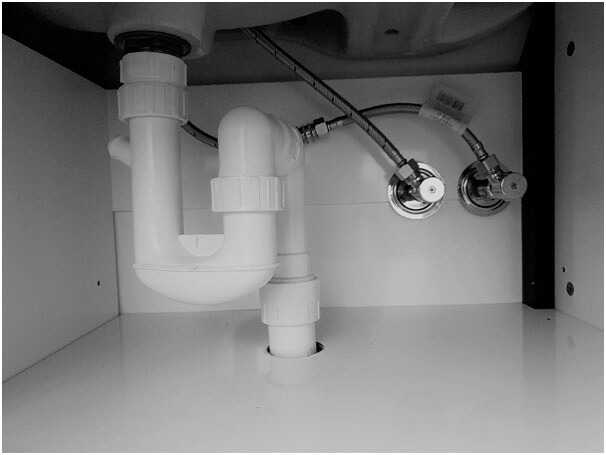The Value of Ventilation in Your Home's Plumbing Systems
The Value of Ventilation in Your Home's Plumbing Systems
Blog Article
We've encountered this great article about What Is A Plumbing Vent & How Do They Work? listed below on the internet and accepted it made sense to relate it with you in this article.

Appropriate air flow in pipes systems is frequently forgotten, yet it is essential for keeping the performance and safety and security of your home's plumbing. Air flow helps regulate atmospheric pressure, prevent the accumulation of unsafe gases, and make sure the reliable removal of waste. In this overview, we will certainly discover the relevance of correct pipes air flow, just how it functions, and the benefits it brings to your pipes system.
How Ventilation Works in Plumbing Solutions
Air Pressure Policy
Appropriate ventilation preserves well balanced atmospheric pressure within the pipes system. When water moves via pipelines, it displaces air. Without sufficient ventilation, this variation can create unfavorable stress, leading to slow down drains pipes or siphoning of water from catches, which can cause undesirable smells to seep into the home.
Protecting Against Sewage System Gas Build-up
One of one of the most crucial functions of plumbing vents is to stop drain gases, such as methane and hydrogen sulfide, from accumulating within the home. These gases can posture serious wellness threats and are extremely combustible. Vent pipes allow these gases to get away securely outdoors.
Aiding in Waste Elimination
Ventilation aids in the effective elimination of wastewater by preventing airlocks in the drainage system. When air can stream freely through the vents, it permits water and waste to stream smoothly via the pipelines, minimizing the risk of obstructions and backups.
Advantages of Appropriate Air Flow
Enhanced System Performance
Appropriately aerated plumbing systems run more effectively, with less clogs, faster draining, and much less strain on the pipelines. This efficiency extends the life expectancy of the pipes system.
Improved Air Quality
By avoiding sewer gases from entering your home, proper ventilation contributes to much better interior air high quality, making your living setting healthier and a lot more comfortable.
Protecting Against Water Damage
Adequate air flow assists protect against water from being siphoned out of traps, which can lead to drain gases entering the home and creating water damage in time.
Actions to Ensure Proper Air Flow
Consulting Plumbing Codes
Constantly consult neighborhood pipes codes when developing or changing your plumbing system. These codes supply the essential standards for proper venting and guarantee your system satisfies security criteria.
Normal Inspection and Upkeep
Routine inspections can assist determine prospective ventilation issues before they come to be major troubles. Maintenance jobs, such as cleaning air vent pipes and looking for blockages, are necessary for maintaining the system in good working order.
Expert Installation
For new installations or significant alterations, it's smart to hire a specialist plumbing professional. They have the experience to make sure the ventilation system is appropriately designed and set up according to code.
Understanding Ventilation in Plumbing
Air flow in pipes refers to the network of pipelines that allow air to flow via the drainage system. These vents serve multiple functions, consisting of regulating air pressure within the pipelines, protecting against sewer gases from going into the home, and helping in the smooth circulation of wastewater.
Sorts Of Plumbing Vents
Key Stack Vent
The main stack vent, also referred to as the vent stack, is the main air vent in a pipes system. It expands from the main drain line up through the roofing, allowing gases to get away and fresh air to get in the system.
Branch Vent
Branch vents connect to the main stack vent and offer private components, such as sinks, bathrooms, and showers. These vents guarantee that each fixture has sufficient ventilation to function appropriately.
Air Admission Shutoff (AAV).
An Air Admission Shutoff (AAV) is a one-way shutoff that permits air to go into the plumbing system without the need for a typical vent pipe prolonging via the roofing system. AAVs are frequently made use of in renovations or locations where installing a common vent is impractical.
Indicators of Poor Air Flow in Plumbing.
Slow Draining Fixtures.
If your sinks, bathtubs, or bathrooms are draining pipes slowly, maybe an indication of bad ventilation. Poor air flow can produce a vacuum impact, making it challenging for water to drain pipes appropriately.
Gurgling Appears.
Gurgling sounds coming from drains pipes are frequently an outcome of air being sucked with water catches as a result of negative pressure in the pipelines. This is a clear indication of insufficient ventilation.
Undesirable Smells.
Sewage system odors inside your home are a warning that your pipes system is not correctly ventilated. This can mean that drain gases are not being appropriately aired vent outside, leading to potentially dangerous problems.
Common Ventilation Errors.
Poor Vent Sizing.
Utilizing undersized vent pipes can result in poor air circulation and pressure inequalities in the system. It's important to use vents that fulfill the certain demands of your pipes system.
Improper Vent Placement.
Putting vents also far from the fixtures they serve can minimize their effectiveness. Appropriate positioning makes certain that air can move openly and effectively with the system.
Disregarding Code Needs.
Building regulations provide certain standards for plumbing ventilation. Overlooking these codes can result in a system that falls short to function correctly and may cause pricey fixings or carcinogen.
Final thought.
Appropriate ventilation is an important element of any type of plumbing system, making certain that it operates effectively and safely. By comprehending the significance of air flow, acknowledging the indicators of inadequate ventilation, and taking steps to keep your system, you can protect against pricey problems and safeguard your home's air top quality.
4 Things You Should Know About Your Plumbing Vents
What Plumbing Vents Are
Also called a vent stack, a plumbing vent is a vertical pipe attached to your drain line that runs through your roof. The plumbing vent pipe, or plumbing air vent, removes gas and odors from your plumbing system and allows fresh air to enter the pipes, helping the water to flow out of the drain pipes.
What Plumbing Vents Do
Plumbing vents have two basic functions. One of which is to allow unpleasant smelling wastewater and sewer gasses to escape your plumbing system instead of entering your home. Plumbing vent pipes are typically located on roofs, away from windows, to ensure the fumes exit the home completely.
The other function of the plumbing vent is to move fresh air into your plumbing system. This helps move water through every plumbing fixture in your house, like toilets and sink drains. Think of the way in which you need to let a little air into the bottle as you pour soda in order to make the drink flow smoothly.
Different Types of Plumbing Vents
True vent: This is the most common vent option. In simplest terms, a true vent is a vertical pipe attached to your drain line that exits through the roof. They often function as the main vent that other fixtures can connect to. Re-vent pipe or auxiliary vent: Attached to the drain line near specific plumbing fixtures, re-vent pipes run up and over to connect to the main vent. Common vent: Two plumbing fixtures installed on opposite sides of a wall are typically tied into the vent stack using something known as a sanitary cross. Wet vent: This venting option operates as a drain pipe and a vent at the same time. Wet vent drainage systems drain water from one fixture while venting the air from another. Although they’ve been used for over 100 years, wet vent systems have only recently been added to the plumbing code in many areas. If you’re planning on installing one in a bathroom remodel, make sure you check your local code prior to construction. Loop vent: For free-standing fixtures like kitchen island sinks, loop vents are ideal. These vent pipes run under the floor, rise from the P-trap, and create a loop inside the cabinet sink. Air admittance valve: An AAV is a one-way mechanical valve typically installed at the site of the plumbing fixture. AAVs allow venting to occur without having to tie into a larger venting system. They’re ideal for venting fixtures where you aren’t able to easily connect to an existing vent system. Common Plumbing Vent Issues
Although vent pipes typically don’t have water flowing through them, they’re still subject to many typical plumbing issues. For example, clogs are one of the most common problems associated with sewer vent pipes. If your vent pipe gets clogged, all of your plumbing fixtures tied into the vent stack will be affected.
A sink with a slow drain that bubbles and gurgles or a strong sewage smell around your toilet are both indicators that your toilet vent pipe is clogged. Because most vent pipes exit through the roof, old leaves, twigs or even a bird’s nest could be clogging the pipe.
Clogs in your vent pipe system cause a buildup of negative pressure, meaning that water won’t be able to flow out of your home very well. It’s similar to putting your finger over the opening of a straw to trap water inside. When you remove your finger, the water is able to flow out of the straw.
If you suspect you have any blockage in your vent, make sure you have a professional come examine the situation. Left unchecked, a blocked air vent can lead to other costly repairs, like leaks and sediment buildup.
Under Pressure
Pipe vents are essential aspects of a home’s plumbing system. Owning a home means learning about all sorts of things you never put much thought into before. But by understanding as much as you can about the important systems of your home, you can keep those budgets intact and those anxiety levels low.
https://www.homeserve.com/en-us/blog/home-improvement/plumbing-vents/

As a passionate person who reads on Essential Plumbing Vent Pipes: Understanding Their Role, I was thinking sharing that chunk was a smart idea. Appreciated our blog posting? Please share it. Let someone else check it out. Thanks a bunch for being here. Return soon.
Book My Estimate Report this page